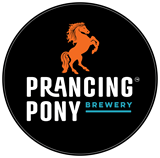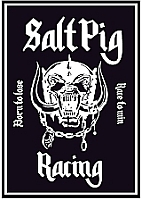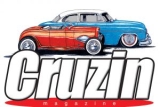FIM CATEGORIES, GROUPS, DIVISIONS, TYPES & CLASSES
For Motorcycles used in Short distance record attempts:
There is a distinction between Category I and Category II, 2-wheeled motorcycles for used World Records for short distance attempts.
The difference between the two categories is the number of the “driven” wheels.
Motorcycle (vehicle) classes fall into three Divisions:
- Division A – Non-streamlined: The rider is visible at all times. No streamlining devices are permitted.
- Division B – Partially streamlined: the exception of hands and wrists). Front and rear wheel must remain partially uncovered (min 180°). The rider is visible when viewed from both sides and from above (with
- Division C – Streamlined: The rider is fully enclosed within the body of the vehicle. This part must be viewed together with Art. 02.81. (Technical Appendices for World Records - STREAMLINED vehicles).
Divisions are then sorted by Types and Classes (see “Divisions” chart)
Motorcycles used for long distance or period attempts
For long distance or period attempts, the rules concerning the capacity of the engine (Art. 2.2), the position of the ballast for three-wheelers (Art. 2.2.4.2) and riders’ clothing (Art. 2.11) must be observed. All other details are the responsibility of the rider and/or the persons making the record attempt.
CATEGORIES, GROUPS, DIVISIONS, TYPES AND CLASSES
“Categories” describe the method by which the motorcycle is propelled.
“Categories” are further defned by “Groups”.
“Divisions” defne the degree of streamlining.
“Ty p e s” are determined by power source and then subdivided into “Classes”.
“Classes” are determined by total engine displacement.
Categories and Groups
| Category I | Motorcycles propelled by the action of one (1) wheel in contact with the ground. | |
All Groups : All vehicles: A track is determined by the longitudinal centre-line of each of the vehicle’s wheels in the direction of forward travel. |
||
Group A1 Solo Motorcycles 2-wheeler vehicles making only one (1) track on the ground. - Solo Motorcycles - More than two cylinders (according to the class capacities, up to 3000cc maximum), Division A and B |
||
| Group A2 Scooters | ||
| Group A3 | ||
| Group Y | ||
| Category II | Motorcycles propelled by the action of two (2) wheels in contact with the ground. | |
| Group A1 | ||
| Group A2 | ||
| Group A3 | ||
| Group B1 | ||
| Group B2 | ||
| Group B3 | ||
| Category III | Special vehicles propelled by the action of multiple wheels or track devices in contact with the ground but which are not covered by the conditions for Category I or II | |
| Group C - Special 2 wheel motorcycles | ||
| Group D - Special 3 wheel motorcycles | ||
| Group E - Snowmobiles | ||
| Group F - Sprinters and Drag Bikes (Dragsters) | ||
| Group G - Quad Racers – 2 wheel driven | ||
| Group H - Quad Racers – 4 wheel driven | ||
| Group J - Electric Vehicles (see Art. 01.82) | ||
| Group Y - Special two wheeled vehicles (streamlined) | ||
| Category IV | Special vehicles not propelled by wheels in contact with the ground. |
Divisions, Types and Classes
Groups are again separated into Divisions, Types and Classes.
| Division A | – Non Streamlined vehicles | |
| Types | Classes | |
Type I - Internal combustion, spark ignition, naturally aspirated
Type II - Internal combustion, spark ignition, forced induction
Capacity and design limits: |
Displacement Classes 50 up to 50 cc 85 over 50 cc to 85 cc 100 over 85 cc to 100 cc 175 over 125 cc to 175 cc 250 over 175 cc to 250 cc 350 over 250 cc to 350 cc 500 over 350 cc to 500 cc 600 over 500 cc to 600 cc 750 over 600 cc to 750 cc 1000 over 750 cc to 1000 cc 1350 over 1000 cc to 1350 cc 1600 over 1350 cc to 1600 cc 2000 over 1600 cc to 2000 cc 2500 over 2000 cc to 2500 cc 3000 over 2500 cc to 3000 cc (*) *adjustment for rotary engines |
|
Type III - Internal combustion,
Type IV - Internal combustion, |
750 up to 750 cc 1500 over 750 cc to 1500 cc 3000 over 1500 cc to 3000 cc |
|
| Type VII - Solar/Electric powered | 150 up to 150 kg 300 over 150 kg to 300 kg +300 over 300 kg |
|
Type X - Other propulsion (Appendices governing the classes on these groups to |
||
| Division B | – Partially Streamlined vehicles | |
| Types | Classes | |
Type I - Internal combustion, spark ignition, naturally aspirated
Type II - Internal combustion, spark ignition, forced induction
Capacity and design limits: |
Displacement Classes 50 up to 50 cc 85 over 50 cc to 85 cc 100 over 85 cc to 100 cc 175 over 125 cc to 175 cc 250 over 175 cc to 250 cc 350 over 250 cc to 350 cc 500 over 350 cc to 500 cc 600 over 500 cc to 600 cc 750 over 600 cc to 750 cc 1000 over 750 cc to 1000 cc 1350 over 1000 cc to 1350 cc 1600 over 1350 cc to 1600 cc 2000 over 1600 cc to 2000 cc 2500 over 2000 cc to 2500 cc 3000 over 2500 cc to 3000 cc (*) *adjustment for rotary engines |
|
Type III - Internal combustion,
Type IV - Internal combustion, |
750 up to 750 cc 1500 over 750 cc to 1500 cc 3000 over 1500 cc to 3000 cc |
|
| Type VII - Solar/Electric powered | 150 up to 150 kg 300 over 150 kg to 300 kg +300 over 300 kg |
|
Type X - Other propulsion (Appendices governing the classes on these groups to |
||
| Division C | - Streamlined Vehicles (Streamliners) (GROUP Y) | |
| Types | Classes | |
Type V- spark ignition
Capacity and design limits: |
Displacement Classes 50 up to 50 cc 85 over 50 cc to 85 cc 100 over 85 cc to 100 cc 175 over 125 cc to 175 cc 250 over 175 cc to 250 cc 350 over 250 cc to 350 cc 500 over 350 cc to 500 cc 600 over 500 cc to 600 cc 750 over 600 cc to 750 cc 1000 over 750 cc to 1000 cc 1350 over 1000 cc to 1350 cc 1600 over 1350 cc to 1600 cc 2000 over 1600 cc to 2000 cc 2500 over 2000 cc to 2500 cc 3000 over 2500 cc to 3000 cc (*) *adjustment for rotary engines |
|
Type III - Internal combustion,
Type IV - Internal combustion, |
750 up to 750 cc 1500 over 750 cc to 1500 cc 3000 over 1500 cc to 3000 cc |
|
| Type VII - Solar/Electric powered | 150 up to 150 kg 300 over 150 kg to 300 kg +300 over 300 kg |
|
Type X - Other propulsion (Appendices governing the classes on these groups to |
Source: FIM World Records Regulations Edition 2017
Learn more...
- World Speed Trials Australia
- Advice for Entrants
- Track Layout
- Information for International Competitors and Visitors
- How to get to Lake Gairdner
- Volunteers Register
Support the DLRA
- Promote your business by advertizing in the DLRA Newsletter
- Sponsors Information










